Your hiking and backpacking trips have been successful. You traversed all sections of the outdoor including the Appalachian, and you accomplished all your objectives of the season. You are back home with all your equipment. Everything is intact except there is something that has been nagging your brain – how do you get the sap of your gear?
Since you have been outside for weeks, and you made a choice not to do your laundry until you went back home, you understand how difficult getting rid of the stain is going to be. If you face this kind of situation, you don’t need to worry anymore. This article offers a guide on how to get sap out of clothes. Before we can go into details, it’s important to understand what a tree sap is.
The sap is a substance you may never think of until it gets on your garment, outdoor cushions, or sleeping bag. While this substance seems to stick to everything, it’s quite difficult to get it out of fabric. The menace created by sap is similar to that of a chewing gum. Although there are chemical-based bottles on the market that can be used to remove it, most of them are costly, and their safety is questionable.
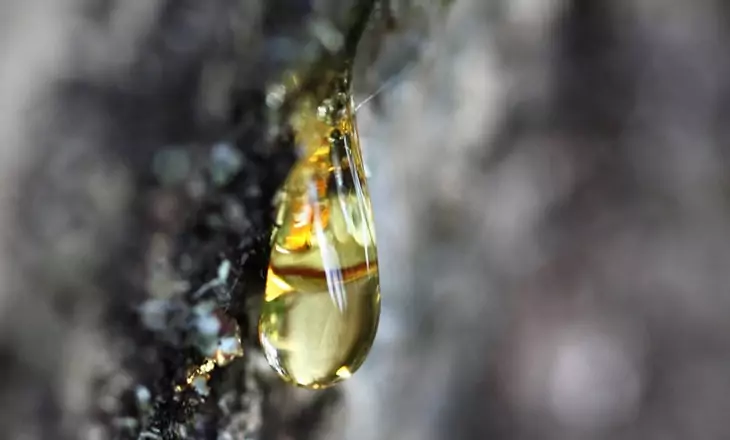
With its goo-like texture, sap quickly adheres to anything it comes into contact with, from your hair and skin to clothing, cars, tents, and more. Although removing the sap from your clothes can be a tedious affair, there are some common household items you could use as stain removers. One of the greatest substance used to get rid of this stain is rubbing alcohol. This component acts as a solvent, breaking up and dissolving the sap. A step by step guide on how to remove sap from clothes will be provided later on in this guide.
WHAT YOU NEED TO KNOW ABOUT SAP
The sticky substance that seeps out of trees known as sap is an essential component of the tree’s life. It transports important nutrients, hormones, and water, which are essential if a healthy plant is to thrive. Damage, pests, pruning and diseases are the common reasons why plants ooze or drip sap. Nevertheless, certain tree species, naturally produce sap and are more susceptible to issues that result in excessive dripping of sap.
Trees that drip sap
When in the wilderness, it’s important to have an idea of the tree species that emit sap so you can know which ones to keep away from. Some members of the Aceraceae family, produce excessive sap; it’s the sap from the sugar maples that is used for the production of maple syrup. Sugar maple grows in the Sunset zones one through ten, and fourteen through twenty, while Japanese maple grows in zones one through ten, twelve and fourteen through twenty-four.

Belonging to Ulmaceae family, the elms release excessive sap when the bark or the limbs of the tree are wounded. Members of the Betulaceae family, birches release a large amount of sap that is harvested for different uses including as beer and as a syrup. Apart from that, the honey locusts, like the elms, will produce an abundance sap when the plant is pruned or wounded.
Trees which do not produce sap
Since most trees drip sap, every species is susceptible to leakage. Nonetheless, certain trees and plants are resistant to disease and pests that induce sap. Planting these kinds of trees will minimize the chance of sap problems from occurring. One of these trees is the English Oak.
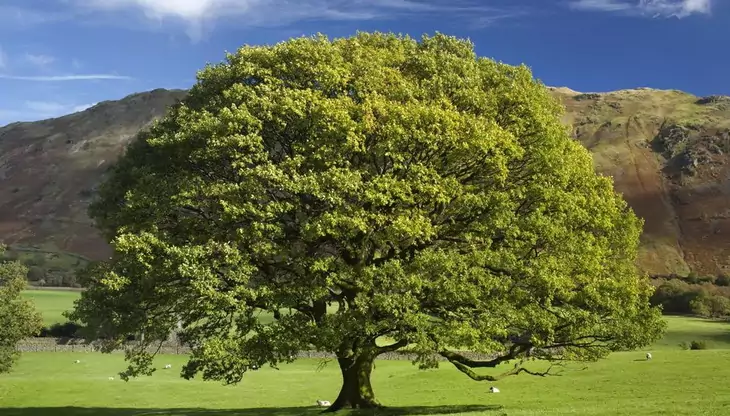
This is a hardy tree which doesn’t produce excess sap and is resistant to diseases and pests that induce sap leakage including fungus which causes Verticillium wilt. Another species is the Japanese snowdrop which reaches up to twenty-five feet and emits fragrant blooms. This pest-free plant is native to Korea, Japan, and China.
Pests and Diseases
Some pests can increase the likelihood of trees releasing an excessive amount of sap. For instance, the bark beetles lay eggs underneath the surfaces if tree barks. After the larvae have hatched, they bore through the trees, leading to the formation of tunnels. As a defense mechanism, the trees begin producing sap into the tunnels to prevent the pests from laying additional eggs. The excessive sap can be observed seeping out of the barks through the holes. The best defense against these pests is prevention; nonetheless, infected plants can be saved using insecticides by licensed applicators.
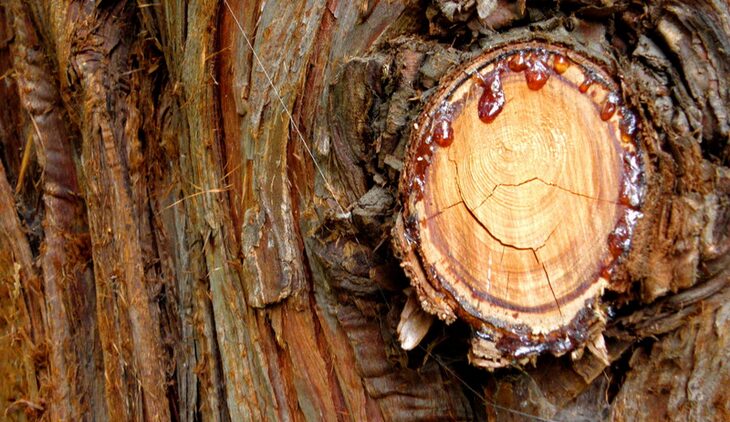
Common garden pests such as aphids, scales, and mealybugs consume the sap and excrete honeydew which you may mistake for sap. If they are not treated, the honeydew will raise the likelihood of sooty mildew growth. The sap-sucking insects can be treated using horticultural oils and insecticidal soaps. Many diseases and fungi that attack plants or tree cause the seeping out of sap. A bacterial infection called wetwood commonly infects elms and causes the sap to flow from wounds or crack of the bark.
WHAT DOES SAP CONTAIN?
Many individuals are amazed when they see tree sap. As an outdoor enthusiast, there is a high chance you have seen sap ooze out of a tree. One question you may have asked yourself is; what does sap contain? Well, here is your answer. Xylem sap mainly contains water, hormones, nutrients, and minerals. Phloem sap mainly contains water, hormones, sugar, and mineral elements in it. Sap from trees flows through the sapwood that produces carbon dioxide.
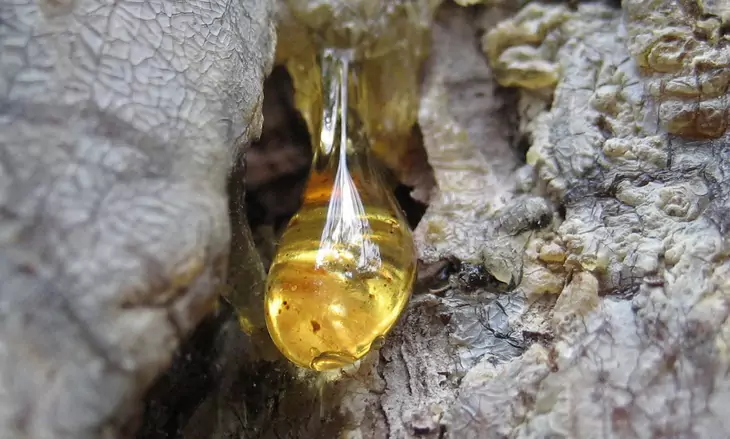
In other cases, the carbon dioxide leads to the buildup of pressure within a tree, and if there are openings and woods, the pressure eventually forces sap to drip from the tree. The oozing of sap can also be related to heat. In the early spring, when a lot of trees are dormant, temperature fluctuations can affect the flow of sap. For example, warmer weather creates pressure inside a tree. This pressure is what causes the sap to flow out of a tree through its injury or cracks. During the cold weather when temperatures get below freezing, trees pull water from the roots, replenishing the sap in the tree. This cycle continues to a point where the weather stabilizes and everything normalizes.
PROBLEMS OF SAP
Sometimes, trees experience unnatural blistering or dripping of sap, a situation that is caused by various factors including fungus, pests, and diseases. On average, nevertheless, trees don’t leak sap unless they are damaged or injured in some way. For instance, bacterial canker is a condition that affects trees that are injured, pruned, or contain cracks, allowing bacteria to get in through these cracks. As a result, the bacteria forces the trees to form a high sap pressure that forces the fermented sap to flow from outwards through the opening. The trees that are affected may have wilted on the branches.
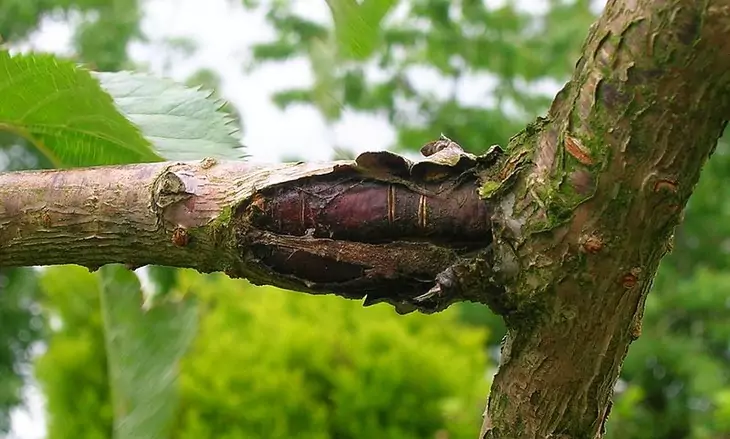
Another bacterial problem is the slime flux which is characterized by the oozing of tree sap. Slimy-looking, sour-smelling sap leaks from the wounds or cracks in the tree, changing into gray as it dries. Insect pests such as borers are usually attracted to tree sap and mostly affect fruit trees. The borers can be present if there’s a gummy-like sap dripping on the top of bark and sawdust at a tree’s base. Root rot fungus exists when either a trunk is too moist, or the soil is overly saturated for a long period.
WHAT CAUSES EXCESSIVE SAP
A network of channels that operate in the same way as the vascular system carries sap that contains nutrients and water from the roots of a tree to its other parts. During the dominant era, deciduous plants withdraw their sap from the trunk and branches, but then in the late spring and winter, the sap is drawn from the roots.
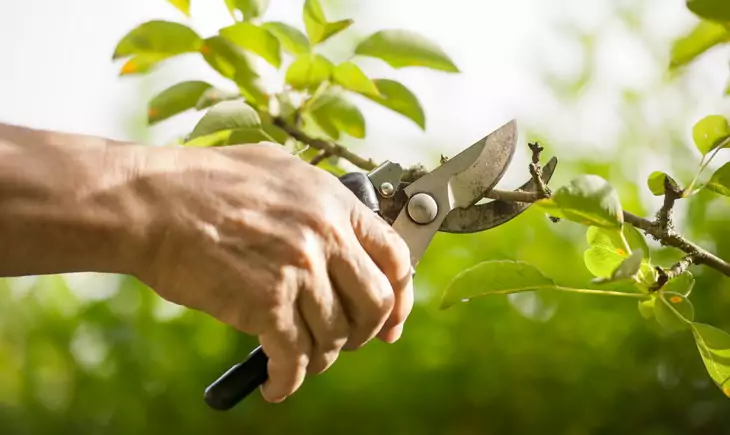
Dripping of excessive sap takes place because of mechanical injuries, insect damage, canker development, and pruning.
- Mechanical injuries: Mechanical damage to a tree by landscape equipment or storms can cause it to drip sap. Back-chewing animals and woodpeckers can also lead to sap dripping. The sap dripping may attract pests and provide suitable conditions for fungi to thrive.
- Pruning: A small portion of sap resulting from a pruning cut, doesn’t harm a plant. As time passes, the cut will heal, and the sap will stop flowing. Nevertheless, excessive and prolonged dripping, can result in the loss of vigor, susceptibility to diseases and pests, which eventually lead to the death of a plant. Luckily, it’s possible to minimize the likelihood of prune-inducing sap by pruning at the right time. For instance, if you prune conifer during their dominant season, they won’t produce sap.
- Insect pests: If you own a garden, it’s imperative you take measures to ensure your plants are not infected in any way. The oozing of sap from a tree could be an indication of bark beetle damage. The sap gathers near the hole forming what is called a “pitch tube.” The production of excessive sap is often a defensive mechanism that plants use to protect themselves from bark beetle. When trying to solve the sap problem, you need to be careful, so the substance does not stain your clothing. Getting rid of the sap from your garment can be a tedious affair and will require the use of the right products, tools, and equipment.
- Fungal canker: Cankers are tree lesions or phloem, which are caused by a bacterial or fungal disease. Some of these cankers drip large amounts of sap that could cause havoc to your outdoor gear. Most of the bleeding cankers are as a result of the Phytophthora fungus. On the lower trunk of silver maples, dark brown sap oozes and is caused by the Phytophthora cactorum and other related fungi. The Sudden Oak Death which is caused by Phytophthora ramorum produces cankers that drip thick, reddish black sap. This fungus may also attack the big leaf maples. Irrespective of what fungi cause the sap, the substance can be a stubborn stain once it comes into contact with your clothes. It’s important to have to have some idea of how to get rid of the sap once it stains your clothes.
GETTING RID OF SAP
Now that we’ve learned a thing or two about sap and its causes, it’s important to look at some of the techniques you would use to remove the sap.
Hair and skin
One of the greatest ways to get rid of the sap from your skin is to use the nail polish remover or the alcohol-based hand sanitizer. Simply rub either of the substances onto the affected part and follow the process with soap and water. Utilizing grease-cutting dish soap or Crisco is also effective. There’s nothing that is as worse as sap getting in your hair.

When that happens, you can use peanut butter to remove the substance. The oils contained in the peanut butter, help in breaking down the sap. This will smoothen the hair and make it easier for you to comb out the substance. Simply cover the areas with sap using peanut butter and use a dryer to soften the substance. Comb out and wash the hair as usual. Apart from peanut butter, you can also use mayonnaise. Allow it to sit for some minutes before rinsing your hair. If sap gets in your eyes, make sure you have a well-stocked first aid kit with you. Read our piece on this topic to be prepared.
Removing sap from cars
You can use household items to remove sap from cars. One of the readily available products is the nail polish remover. However, care should be taken when using the nail polish as this could also remove the paint. Soak the cotton ball in the polish remover.
Rub the wet cotton onto the affected section in a circular motion. Rinse it off using hot water and baking soda (3 cups of water and 1 cup of baking soda). Wash the car after removing the sap. An oil-based solvent, mineral spirit, is a useful substance that can also be used to remove sap from cars. Soak the substance into a towel and rub onto the affected section of the car. Repeat the process until the sap is gone, and wash it as usual.
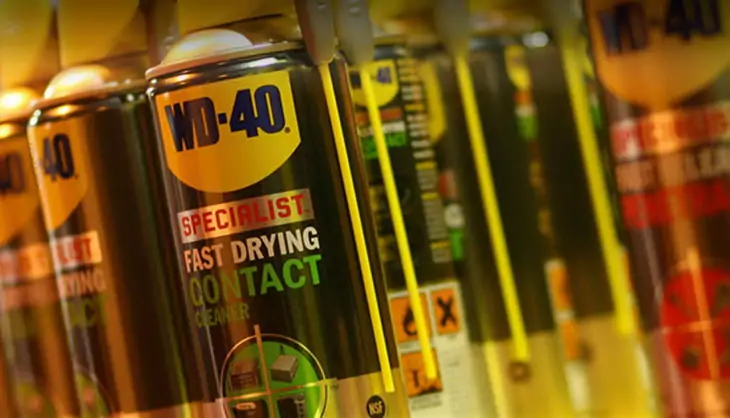
Another great product that can be used to remove sap from a car is WD-40. The mild solvent properties of the WD-40 can easily break down the sap. This substance is safe to use on most kinds of paint. Once you have used it, rinse it off using vinegar and water solution, and wash the car as usual.
Removing sap from wood decks
Do you have an idea of how to remove sap from wooden surfaces and the wood decks? As an alternative to the harsh, strong stain removers, you can utilize non-diluted Murphy’s Oil Soap. Pour directly onto the stained area, or apply using a mop. Allow the substance to sit for 10 to 15 minutes. Scrub the place using a brush and rinse. The solution softens the sap, making it easier for you to remove it from the surface.

It’s important to note that Murphy’s Oil Soap works best on sealed or finished decks. Sap is often difficult to eliminate, especially after it has hardened. Nevertheless, knowing how to remove it using the common household products can make the task easy.
GUIDE ON HOW TO REMOVE SAP FROM CLOTHES
When tree sap clings to your clothes, it can take forever to come out. But there are two techniques you could use to get rid of the sap, and these are quite similar to removing adhesives. The most effective methods are, to dry the sap out to remove it, and to lubricate the sap, so you can get it out of your clothes. And make sure you are wearing suitable clothes for camping, as detailed in our article- check it out.
Having said that, here are two simple ways to eliminate sap from your outdoor attires.
Method 1
What you’ll need:
- Hand sanitizer
- Peanut butter
- WD-40
- Rubbing alcohol
- Nail polish remover
- Goof off
- Cooking oil
- A piece of cloth
- Laundry detergent
Step by step guide
- Begin by getting a cleaner. As you select your remover, you should first know the type and color of your clothes’ fabric. Do not use a nail polish remover on colored clothes as this may destroy the color. If you still doubt, test out a portion of the fabric to determine whether the remover alters the color.
- Once you have selected a cleaner that fits your clothing in terms of color and fabric, put a small portion of it. After that, damp the piece of cloth and try blotting it on the sap.
- If the sap is large or thick enough, you can place the cleaner directly on the affected area. Spread the substance using your fingers.
- Before washing the clothes or putting them in a dryer, it’s imperative to ensure that the sap has been removed.
- If you can still notice some sap on the fabric, repeat the steps once more.
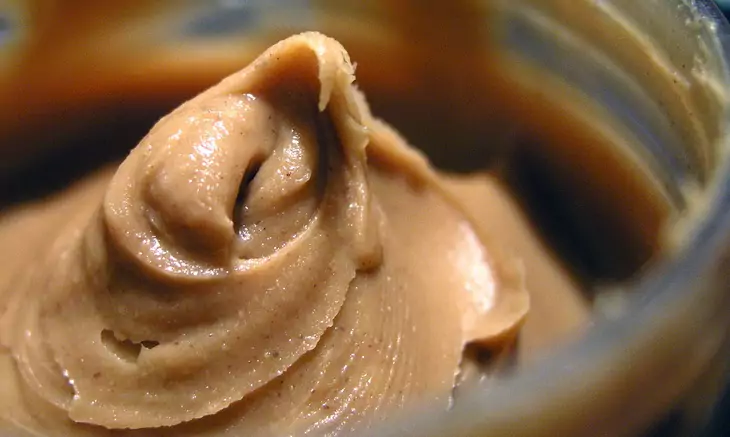
Method 2
What you’ll need:
- Wax paper
- Ice pack
- Packaging tape
- A piece of cloth
- A plastic knife
- Rubbing alcohol
- Mild soap
- Citrus-based remover
- Water
- Powdered laundry detergent
Step by step guide
- Position the section of your shirt or pants containing the sap. If the clothing can fit in the freezer, put it in for about an hour or two to allow the sap to become breakable. If the clothing is large and cannot fit, cover the affected sections using wax paper. Place an ice pack on the wax paper to make the sap brittle.
- Try moving the affected clothing back and forth. Also, try pressing the fluid so it can crack. Apart from that. You can scratch off the sap using a plastic knife. After that, wrap a packaging tape inside onto your fingers. Blot the tape over the sap to remove its smaller portions.
- You can also decide to apply some small portions of the citrus-based remover. You may also pick the same removers used in getting rid of stickers. Place the remover on the affected parts of your clothing and let it soak for some time.
- Additionally, you may need to use some rubbing alcohol on the garment. Make sure the clothing material is white so that the solvent does not dye or stain it. Gently blot this solvent above the sap, and allow it to dissolve
- You can put some small amount of soap or any other detergent on the dampened fabric. Wipe the clothing off, so the goo will come out.
- Rinse the clothing ad allow it to air-dry.
- Lastly, you can mix a thick consistency of laundry detergent in powder form with some water. Apply this mixture over the residue. Allow the mixture to sink into the clothing for about a half an hour. Wide off the detergent and allow the garment to air dry.
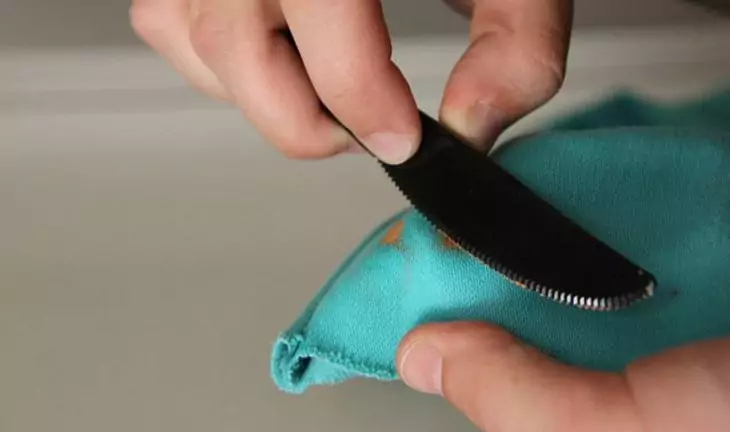
ADDITIONAL SAP-REMOVING TIPS
Here are some pointers you may use to get rid of sap on your garment:
- When placing your shirts in the freezer, make sure they are positioned correctly. Be careful to ensure the sap doesn’t come into contact with other parts of the material. Otherwise, this will only scatter the goo to other areas of the fabric.
- If your shirt is washable in a washing machine, try washing it once the sap has been removed. Be careful to follow the instructions on your machine. If suggested, you may opt for hot water. Once you are done, allow the fabric to air dry.
- If you are planning to place the clothes in a dryer, it’s important that you ascertain all the sap has been removed. If there are some remnants, the heat from the dryer will melt the sap and distribute it to other parts of the fabric.
If sap gets on your sleeping bags, see our guidelines on how to clean your sleeping bags for more details.
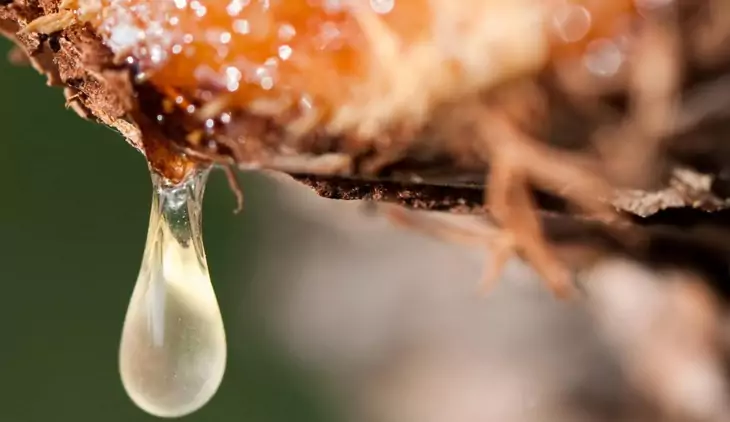
FINAL THOUGHTS
Sap is just a substance you hate to have on your fabric. While this goo can cling to just about anything, it’s possible to remove it using the right techniques.
Fortunately, this article has provided some guidelines on how to get rid of sap. What you have to do is follow either of the two processes given if your clothes happen to get sap.
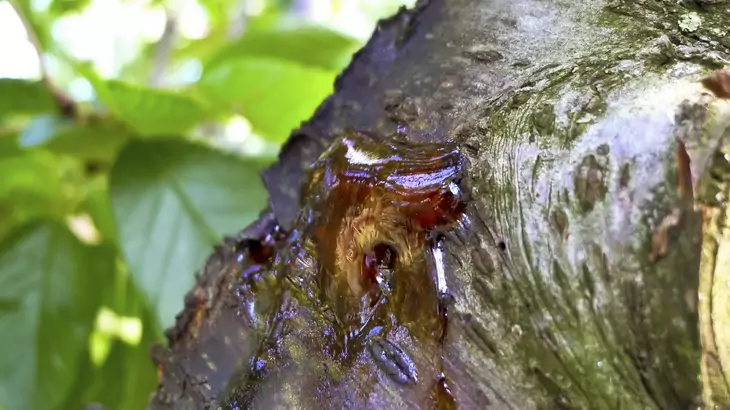
So, did you find this guide helpful? If you still have questions, reactions, or concerns, feel free to air your view by posting on our comment section. We’ll be more than glad to respond to all your queries.








Apart from making your clothes look ugly, sap can cause problems for washing if no treated correctly. So, choose the method that will work best with your clothes.
Removing sap from a tent is not entirely simple as most people would imagine. You have to be careful not to damage your tent. And of course, Method 1 can do the trick.